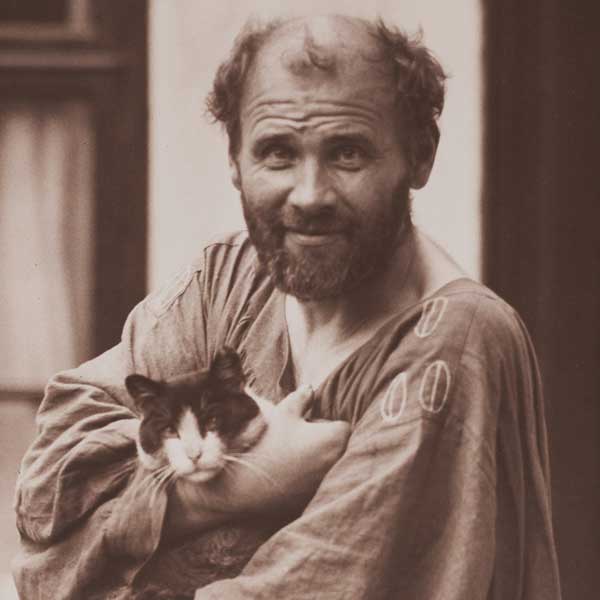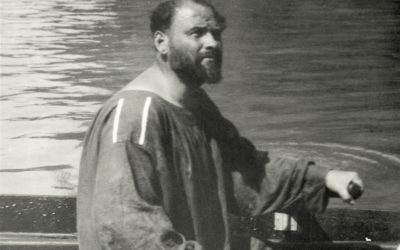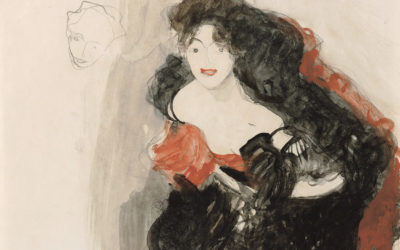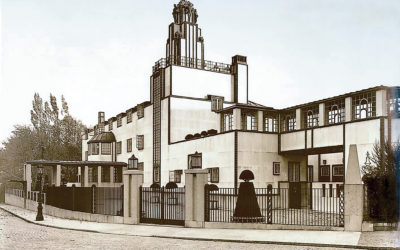Gustav Klimt
The Forerunner of Modernism
Gustav Klimt stands for an era which still fascinates and resonates today: Modernism. In particular, the artist left his mark on Vienna and played a crucial role in shaping the era around 1900 together with his companions, among them Josef Hoffmann, Otto Wagner, Joseph Maria Olbrich, Richard Gerstl, Egon Schiele and Oskar Kokoschka. In 2012, Klimt would have celebrated his 150th birthday. Accordingly, this year the entire city of Vienna is commemorating
“Gustav Klimt and the birth of Modernism”
At the turn of the 19th and 20th century, Vienna was one of the birthplaces of Modernism, along with Paris, Munich and London. As the home of the Austro-Hungarian monarchy, it was a European centre and the fifth biggest city in the world, with over two million inhabitants in 1910. The visual arts, literature, music, architecture and science were at their peak; new and groundbreaking ideas emerged – and all at a density and velocity rarely seen before. The oeuvre of Gustav Klimt reflects this artistic path from the historicist “Ringstrasse Era” to the beginnings of abstract art in a particularly unique way. The most important milestones on his way to the “Gesamtkunstwerk” will be presented in the following texts.
Design: Manfred Thumberger, www.selenoart.com

1862-1883: Klimt – Up close and personal
Gustav Klimt was born into an epoch that was shaped by Historicism and which led into Modernism. His family lived in modest circumstances. His father, Ernst Klimt (1834-1892), migrated to Vienna with his parents as an eight-year-old from northern Bohemia and was...
1883-1892: Klimt and the “Artists’ Company”
Frieze at the Kunsthistorisches Museum, Vienna, 1890/91On the basis of their successful collaboration at the arts college, Gustav Klimt, Ernst Klimt (1864-1892) and Franz Matsch (1861-1942) founded the “Artists’ Company” in 1883 [1]. Their technically and...
1894-1905: Klimt’s Faculty Paintings
Seldom has there been a project in Austrian art history that aroused so much opposition from its beginnings. The main building of the University of Vienna, the Alma Mater Rudolfina, was completed in the French-Italian Renaissance style by Heinrich Ritter von Ferstel...
1897-1905: Klimt and the Vienna Secession
The foundation of the Vienna Secession is considered a milestone for the artistic renewal of “Vienna 1900” and the birth of Viennese Jugendstil. 23 artists, above all Gustav Klimt, Josef Hoffmann, Joseph Maria Olbrich, Kolo Moser and Carl Moll, dissatisfied with the...
1898-1917: Klimt‘s landscapes
After being already pretty well known for his allegories and female portraits, Gustav Klimt turned relatively late to landscape paintings. The first works of this genre were produced in 1898 [1], when he already was president of the shortly before founded Vienna...
Klimt’s Drawings
Embracing Couple (Study for the „Beethoven Frieze“), 1902, Leopold Museum, ViennaProfile of a Girl with Hat and Cloak, 1908/09, Leopold Museum, ViennaGirl putting on Stockings, 1908/09, Leopold Museum, ViennaProning Female Half-Nude with Frilled Dress, 1904, Leopold...
1902: Klimt’s Beethoven Frieze
Beethoven Frieze, Narrow Side: Hostile Forces, Disease, Madness, Death, Lust, Unchastity, Immoderacy, Niggling GriefOf the Vienna Secession exhibitions taking place between 1897 and 1905, the 14th exhibition (April 15th – June 27th, 1902)—dedicated entirely to the...
Klimt and his Patrons in “Vienna of 1900”
Alma Mahler, 1899Friederike Beer-Monti, 1913Eugenia PrimavesiBerta Zuckerkandl,1908Even today, the world remains fascinated with the idea of “Vienna around 1900,” with all its peculiarities and diversity. The Jugendstil painter Gustav Klimt, who was supported and...
1904-1909: Klimt and the Stoclet Palace
ExpectationTree of LifeFulfillmentTree of Life"The Stoclet House is indeed very, very beautiful. The photographs give no idea and do no justice to it. The garden as well is much prettier than I expected [...] And when I walk through this room – I have the strongest...
1903/05-1911: Klimt and the “Golden Phase”
Portrait Adele Bloch-Bauer I, 1907, Neue Galerie, New YorkNot everybody was able to afford works by Gustav Klimt. His clients were mostly men of the upper middle classes. His commissions were a mirror of Viennese society, which, on many occasions, speculated about the...
Klimt and Emilie Flöge
Gustav Klimt und Emilie Flöge in the Garden of Villa Oleander, 1910Gustav and Emilie in a Rowing Boat, 1909Gustav Klimt painted the portrait of Emilie Flöge, who he first met in the 1890s and stayed connected with for the rest of his life, between 1902 and 1904. The...
1908/09: Klimt and the Kunstschau
Seal of the Kunstschau 1908, Leopold Museum, ViennaIn 1908, the emperor Franz Josef celebrated 60 years since his coronation with a procession in honour of the emperor’s jubilee. Numerous artists were involved with the arrangements for the procession, including the...
1903-1915: Klimt and the Depiction of the Cycle of Life
Death and Life, First Version, 1910/11, Leopold Museum, ViennaHope II, 1907-1908, The Museum of Modern Art, New YorkHope I, 1903/04, National Gallery of Canada, OttawaIn addition to representational portraits of women from Viennese society and innovative landscape...
1912-1918: Klimt’s Last Studio
Gustav Klimt worked for nearly 20 years in a studio situated within an overgrown garden in the Josefstadt district. After this building was demolished, his artist colleague Felix Albrecht Harta helped him find a charming little house with a big garden in 1912, in the...














